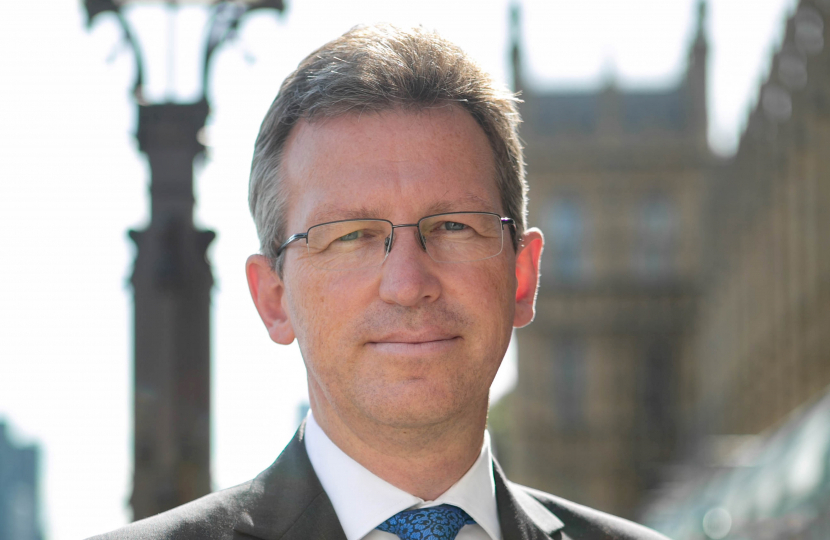
I welcome the opportunity to contribute to this consultation process on the ‘Resourcing to Risk’ proposals and am grateful for the discussions I have had with the Portfolio Holder and the Chief Fire Officer on them. The proposals affect 5 fire stations in my constituency – Fenny Compton, Gaydon, Kenilworth, Southam and Wellesbourne. The effect of the proposals is not the same in all 5 cases.
It seems to me that the relevant questions are:
1) Are these proposals beneficial to the delivery of fire services in Warwickshire and for my constituents specifically and
2) Are these proposals necessary in order to ensure the delivery of fire services remains sustainable?
On the first question, it must be for the Fire Authority to make the case that their proposals will deliver benefit. Their case is made on the basis of data collected during a period which includes Covid-affected years. It has not been explained how this might affect the data’s reliability as a predictor of what future years will be like. The data used also seems to vary from the data used in a Fire Inspectorate report covering Warwickshire for the same period. Again, this has not been explained. Based on the data used, on two obvious measures of benefit the outcomes are mixed or marginal. They will save little money to be reinvested in the service, if any. On the measure many will care about most – response times for appliances reaching incidents – granular data on the areas surrounding the stations in my constituency is hard to come by, but it appears that attendance times in South Warwickshire will largely be worse if these proposals are implemented. On the figures provided, the average response times for first and second attending appliances will be longer in both Warwick and Stratford Districts. Rural response times are likely to be worse still, as District-level figures are an average of response times for both rural areas and for urban areas close to stations (Stratford and Leamington Spa for example) where a full service will be maintained. We do not have granular data either for night-time cover, particularly for the areas around Wellesbourne and Southam where cover from those stations will end at 10pm. It is hard therefore, on these measures, to see benefit in these proposals for the areas I represent. There are also less measurable considerations. Retained or on-call firefighters have been a valuable addition to wholetime firefighting capacity in Warwickshire for decades and have been a meaningful way for volunteers to serve their communities. This service has helped to strengthen the communities in which it has been given and its loss removes a strand of community engagement and activism which many have valued.
It is not clear that the new model proposed will in fact allow those who have served as retained firefighters to continue to contribute in ways that suit their lifestyle, and the suggested benefits to the diversity of the firefighter workforce are at this point largely speculative. One possibility is that evening shifts and surge capacity under the proposed model will substantially be covered by existing wholetime firefighters. If that were to happen, the potential damage done to overall resilience by having a smaller total number of trained and potentially available firefighters at times of crisis does not appear to have been fully explored.
On the second question, it is argued by those making these proposals that the status quo is unsustainable and change is essential, in particular that retained firefighter availability is too low to make it viable and that lack of availability means change is needed to enable a consistent and reliable response. It would be easier to accept that this situation is irreversible if significant efforts had been made to improve retained firefighter availability by increased recruitment or other means, but there is little evidence of that. It has been suggested to me that a significant number of retained firefighters became wholetime firefighters before the pandemic period and have not been replaced. In any event, post-pandemic, it does not seem that substantial effort or investment has been put into recruiting on-call firefighters again. That is not to say of course that such efforts would be guaranteed to be successful if made, but it seems to me an important part of the case the Fire Authority is seeking to make that all that could be done to recover the position has been done, before the conclusion is reached that retained status must come to an end in Warwickshire.
Finally, stations like Kenilworth are to be designated as ‘surge stations’. There are differing estimates of how often such stations would actually be used under the new model, but given the concerns about lack of availability leading to low frequency of response from retained stations which have triggered these proposals for change, there must be a concern that the low frequency of use proposed for surge stations will lead to further proposals to close those stations altogether.
I remain concerned therefore that a persuasive case has not yet been made for these proposals.

